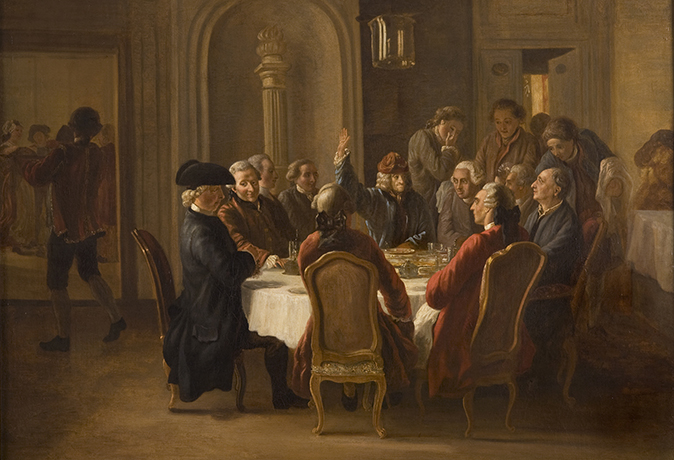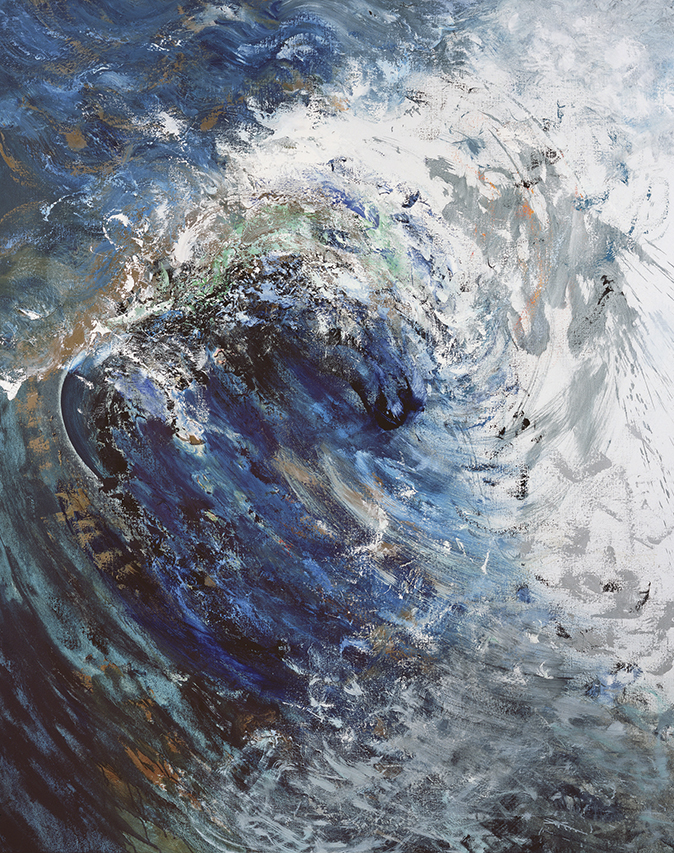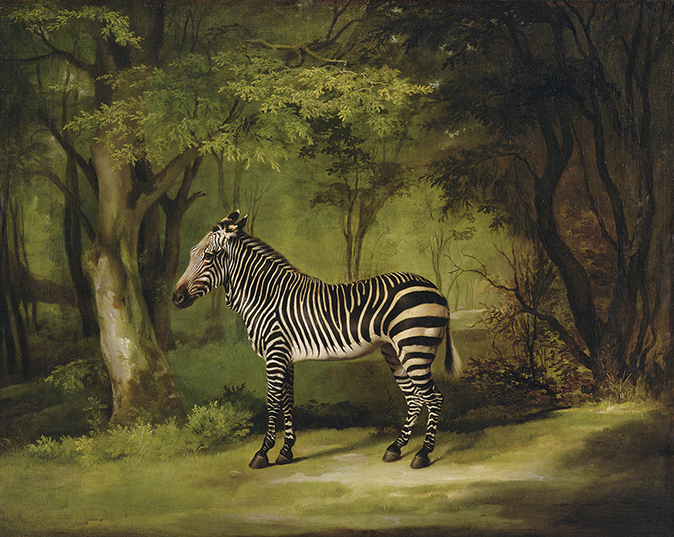My favourite painting: Nicholas Cronk
'I like the fact that the painter, Huber, has cheekily seated himself on the great man’s left.'


La Sainte Cène du Patriarche (The Patriarch’s Last Supper), about 1772, by Jean Huber (1721–86), 23½in by 31½in, The Voltaire Foundation, Oxford
Nicholas Cronk says: This painting hangs in my office and I’m lucky enough to see it every day. Voltaire was always said to be a great talker and performer and here he is in sociable mode, presiding over dinner with his fellow writers. I like the fact that the painter, Huber, has cheekily seated himself on the great man’s left. The Voltaire Foundation is currently engaged in publishing the entirety of the French philosopher’s writings, so it’s a great encouragement to have him waving at us, but I do wonder about the servant standing just behind Voltaire: who is he laughing at?
Prof Nicholas Cronk is Director of the Voltaire Foundation, University of Oxford
John McEwen comments on La Sainte Cène du Patriarche: Jean Huber was born in Geneva, his father a member of the city’s Council of Two Hundred, a legislative authority to which Huber was appointed in 1752. He was a self-taught artist and birds were his favourite subject. In 1783, he published Note on the Way of Steering Balloons, based on the Flight of Birds of Prey and, at his death, left unfinished a History of Birds of Prey.
When that enlightenment titan Voltaire (1694–1778) acquired the Château de Ferney near Geneva in the late 1750s, he turned it into an intellectual court overseen by his niece. There were often as many as 40 guests staying, provoking him to say he was the inn-keeper of Europe. Huber was a member of his inner circle for 20 years, earning the nickname ‘Huber-Voltaire’.
Huber’s artistic popularity rested on his entertaining mastery of cutout silhouettes, whether portraits, landscapes or caricatures. Voltaire described him to a patron: ‘He will do your portrait... in pastel, in oils, or in mezzotint. With scissors he will make a cut-out sketch of you as a complete caricature. This is the way he ridiculed me from one end of europe to the other.’
Catherine the Great commissioned Huber to paint a series on life at Ferney. This picture, with its sacrilegious hint of Christ’s Last Supper, may have been refused. everyone is identifiable: Voltaire raises his arm, Huber is to his left. The gathering is imaginary, picturing an ideal end to the warring of the French philosophes, hence the presence of Diderot (profile, farthest right), who never visited Ferney, despite invitations.
Exquisite houses, the beauty of Nature, and how to get the most from your life, straight to your inbox.

My favourite painting: Harriet Bridgeman
'For me, this painting shows her extraordinary skill and confidence in the handling of the sea, its unpredictability and its

My favourite painting: Amy Meyers
'Stubbs’s portrayal is one of the subtlest and most poignant commentaries on the troubling displacements that were accruing from the
Country Life is unlike any other magazine: the only glossy weekly on the newsstand and the only magazine that has been guest-edited by His Majesty The King not once, but twice. It is a celebration of modern rural life and all its diverse joys and pleasures — that was first published in Queen Victoria's Diamond Jubilee year. Our eclectic mixture of witty and informative content — from the most up-to-date property news and commentary and a coveted glimpse inside some of the UK's best houses and gardens, to gardening, the arts and interior design, written by experts in their field — still cannot be found in print or online, anywhere else.
